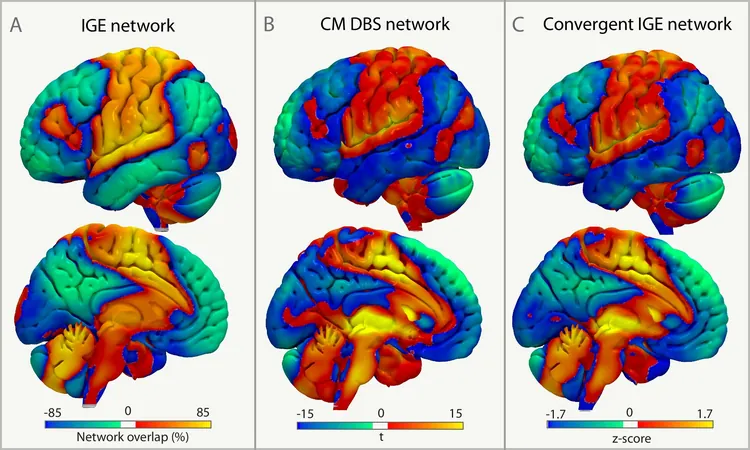
Coastal Wetlands: The Unseen Guardians of Our Climate, But at What Cost?
2025-03-13
Author: Daniel
In the heart of Florida's Everglades National Park, the majestic mangroves that once stood tall are now reduced to eerie silhouettes, forming one of the region's largest ghost forests. Hurricane Irma struck with ferocity in September 2017, leaving a trail of destruction that decimated vast areas of this once-thriving ecosystem. Unfortunately, the prospects for recovery appear bleak, with many experts doubting the mangroves' ability to regenerate in the face of ongoing climate change.
David Lagomasino, a professor of coastal studies at East Carolina University, is currently investigating these impacts as a part of NASA's ambitious BlueFlux Campaign. This three-year initiative is centered on understanding how the sub-tropical wetlands influence atmospheric levels of carbon dioxide (CO2) and methane, two potent greenhouse gases that contribute significantly to global warming.
Dr. Ben Poulter, a leading researcher at NASA's Goddard Space Flight Center, emphasizes the urgent need to understand how these ecosystems are being affected by rising sea levels and severe weather events. While coastal wetlands cover less than 2% of the Earth's land area, they play a crucial role in carbon sequestration, with Florida's coastal wetlands alone absorbing approximately 31.8 million metric tons of CO2 annually—that’s equivalent to the emissions produced by over 26,000 global flights!
In addition to capturing atmospheric CO2, these coastal ecosystems are vital for storing carbon in marine sediments, a process referred to as "blue carbon." However, the increasing threats from climate change and human activity raise serious concerns about losing this critical stored carbon.
Lagomasino and his team are meticulously extracting core samples from the Everglades' rich peat layer, composed of carbon-rich remnants from mangroves. This "black gold" can tell us a lot about the ecological history of the region, with some studies indicating that the peat in these areas can accumulate at rates ten times faster than in other forest types. Nevertheless, ongoing degradation poses significant risks, as damaged wetlands may release more greenhouse gases back into the atmosphere than they capture.
The findings of the BlueFlux campaign have already revealed a troubling duality: while coastal wetlands expertly remove substantial amounts of CO2, they also generate significant levels of methane—a greenhouse gas with warming potential over 80 times that of CO2 over a 25-year period. Scientists currently estimate that Florida's wetlands might produce enough methane to offset about 5% of the climate benefits they achieve through carbon removal.
Efforts to monitor gas exchange in wetlands are revealing more about this delicate balance. As these ecosystems suffer due to environmental stressors, they not only provide less carbon mitigation but also contribute more greenhouse gases to the atmosphere. Understanding the exact relationship between wetland health and gas flux rates remains an intricate puzzle for researchers.
As Florida's wetlands age—many are around 5,000 years old—the loss of more than half of the state's wetlands in the last century highlights a critical environmental crisis. Today, the Everglades is home to 65% less peat and has lost 77% of its stored carbon since drainage efforts began. This transformation poses not only a threat to biodiversity but to the drinking water supply for over seven million Floridians.
Experts like Meenakshi Chabba from the Everglades Foundation believe that the future of Florida's fragile ecosystem hinges on effective management bolstered by sound science. The next phase of the BlueFlux campaign involves developing a satellite-based data product that will offer real-time insights into the condition of Florida's wetlands and enhance restoration efforts aimed at preserving these vital ecosystems.
While coastal wetlands face daunting challenges, there’s hope. Through dedicated research, conservation, and restoration efforts, we may just ensure that these natural carbon capture champions continue to thrive and protect our planet. Will we take the necessary steps to safeguard these ecosystems before it's too late? The future of our climate depends on it!




 Brasil (PT)
Brasil (PT)
 Canada (EN)
Canada (EN)
 Chile (ES)
Chile (ES)
 Česko (CS)
Česko (CS)
 대한민국 (KO)
대한민국 (KO)
 España (ES)
España (ES)
 France (FR)
France (FR)
 Hong Kong (EN)
Hong Kong (EN)
 Italia (IT)
Italia (IT)
 日本 (JA)
日本 (JA)
 Magyarország (HU)
Magyarország (HU)
 Norge (NO)
Norge (NO)
 Polska (PL)
Polska (PL)
 Schweiz (DE)
Schweiz (DE)
 Singapore (EN)
Singapore (EN)
 Sverige (SV)
Sverige (SV)
 Suomi (FI)
Suomi (FI)
 Türkiye (TR)
Türkiye (TR)
 الإمارات العربية المتحدة (AR)
الإمارات العربية المتحدة (AR)